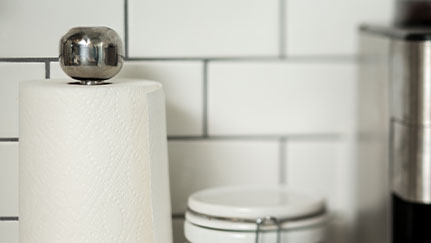
Mold is generally nothing to worry about outdoors, but it can become a serious issue if it starts growing in your home. The potential for mold growth occurs wherever moisture is present — and it’s not always in places you’ll immediately notice. If mold isn’t promptly remediated, it could create major health problems for your family and cause damage to your residence and belongings.1
You may consider reaching out to your home insurance provider when dealing with mold damage only to discover it’s not covered in your insurance policy. Mold coverage isn’t always guaranteed, so knowing the different types of homeowners insurance coverage is important.
When homeowners insurance covers mold damage
When does homeowners insurance cover mold? Whether you are covered is based on the source of the mold. If mold forms as a result of a covered peril or event listed in your policy — typically related to water damage — then your insurance should cover the damage.
Examples of situations when mold damage may be covered2, 3
Here are some scenarios in which you would be covered for resulting mold damage2, 3:
- Malfunctioning appliance, such as a washer or dishwasher, causing a leak
- Burst or frozen pipe
- Broken water heater
- Water damage caused from extinguishing a fire
It’s important to note that for situations such as these, the mold is resulting damage — not initial damage. That means your insurance can help you with mold remediation and repairing your floors or walls, but it will probably not replace a broken appliance. Your policy might also have a cap on the amount it pays toward mold removal, which may not cover all of the mold damage.2
When homeowners insurance does not cover mold damage
Generally, mold damage that isn’t covered by homeowners insurance stems from a lack of regular upkeep or maintenance.
Example scenarios when mold damage may not be covered
You probably won’t be covered if mold forms in your home due to1, 2:
- A poorly ventilated bathroom or kitchen causing an increase in humidity
- Improper sealing around the base of a toilet or shower, allowing water to seep through the floor
- Dirty or broken roof gutters forcing water to flow over other parts of the house
If your insurance deems that your mold damage was preventable, then you may end up paying entirely out of pocket to make your repairs.
Even when mold damage is beyond your control, your insurance may still not provide support. Flooding, for instance, isn’t usually covered in a standard homeowners insurance policy and often requires having flood insurance.2 If you’re in a high-risk area, this could be a worthwhile purchase or it may even be required by law.4
Prevent mold growth in your home
Preventing mold starts with managing moisture. Whether it’s from excess humidity, condensation, or actual water, the areas of your home that tend to trap moisture will be the most prone to mold growth.
Tips to control moisture
To help effectively combat excessive moisture indoors, follow these tips1:
- Clean up water leaks and spills within a day or two of occurring
- Clean and repair roof gutters regularly
- Ensure air conditioning drip pans are clean and drain lines are flowing properly
- Check that the ground slopes away from your home so water doesn’t collect around your foundation
Controlling the humidity of your home is also a key part of managing moisture. Try to maintain low humidity inside; if you have a way to measure it, humidity should be kept below 60%. Keep an eye out for condensation collecting on windows, walls or pipes, as this can signify high humidity. Make it a point to quickly dry off these surfaces if this happens.
Tips to maintain low humidity
Here are some ways you can reduce humidity in your home1:
- Vent moisture-producing appliances, such as stoves and clothes dryers, to the outside when possible
- Use air conditioners and dehumidifiers as needed
- Run the bathroom fan or open a nearby window when showering
- Use exhaust fans or open windows when cooking and operating water-heavy appliances, such as the dishwasher
Mold growth can be an unpleasant surprise, but most of the time, regular maintenance and a look around the house can keep it from getting out of control. For the many unexpected problems that can happen at home, Nationwide can help. Get a Nationwide’s homeowners insurance quote online today.
[1] EPA.gov “A Brief Guide to Mold, Moisture and Your Home” (Nov 2020)
[2] Investopedia “Does Homeowners Insurance Cover Mold? (Jan 2021)
[3] nationwide.com/lc/resources/home/articles/homeowners-insurance-faqs (accessed Mar 2021)
[4] FEMA National Flood Insurance Program “Who’s required to have flood insurance?” (Accessed Mar 2021)
Insurance terms, definitions and explanations are intended for informational purposes only and do not in any way replace or modify the definitions and information contained in individual insurance contracts, policies or declarations pages, which are controlling. Such terms and availability may vary by state, and exclusions may apply. Discounts may not be applied to all policy coverages.